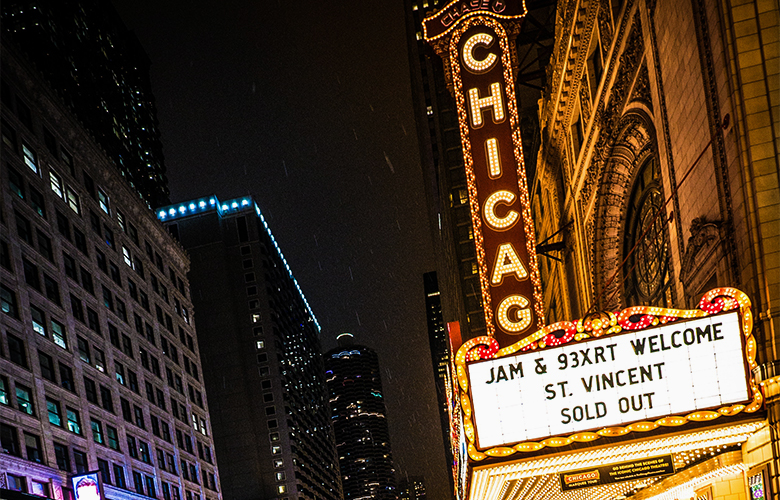
The process of buying a ticket has never been more straightforward or more secure, thanks to technology. Long gone are the days of standing in line at a box office or being put on hold on a landline phone. If you have ever bought a ticket, you have probably become inundated with emails and social media campaigns with ticket offers. But with live entertainment and theaters around the world closed, what did I buy with this “ticket”?
I am a producer of live Broadway shows and the founder of BroadwayHD, a streaming service for digital captures of full-length stage plays and musicals. I have been in the business of selling tickets and subscriptions for so long that I have been asked to write the definitions for the terms and language used in marketing shows both onstage and digitally. Let’s take a look at why there is confusion.
A ticket was a wooden or metal token or a paper voucher for admission to enter a venue to watch a show. The world is moving toward “virtual” and paperless with digital data in QR codes and barcodes replacing paper tickets. “Virtual” is an intangible, nonphysical object and some elements of it are computer-generated. You can have a “virtual ticket” to a “live performance”, meaning a paperless ticket to an in-person show at the theater.
Tickets bundled into a series of shows in one season at the same venue are called subscriptions. Streaming services also sell subscriptions for access to digital shows (aka digital captures or live captures) on a monthly or annual basis.
Broadway has 41 theaters in Times Square that all sell tickets to a show at 8 pm for six nights a week. How does one show stand out from the others? Marketing campaigns create interest and compete for the shows’ ticket sales but it’s highly competitive and expensive. One of the quickest ways to get attention is brand recognition and familiar names. The biggest names and titles usually get noticed first, and those names quite often come from Hollywood movies or celebrities. So put a movie star’s face in your Broadway show ads, and your problem is solved, right? Not always. Take a look at the Broadway posters and marketing for Bradley Cooper, Scarlet Johansson, and Denzel Washington, and you will notice the language “Live on Broadway” or “limited engagement on stage.” These stars’ faces are so closely associated with movies that when they come to Broadway, special mentions must be made to let people know that they will be “live on stage in person at the theater at 8 pm.” When a movie or tv star is in a Broadway show’s digital capture, like Hugh Jackman in Oklahoma or George Takei in Allegiance, the lines blur even further.
The companies that you trusted to buy tickets to live stage shows are now offering “virtual tickets” to “virtual events” in addition to access to live events in the future. You need to be clear if you are buying a ticket to go to a theater or watch theater on a screen. You also need to understand if your “virtual ticket” allows you to watch when you want or at their scheduled virtual curtain time. Go to the website for your favorite ticket sellers, and you will notice lots of new categories for “virtual“and “watch from your couch” options.
Many theaters in the business of producing live stage shows have adopted the “the show must go online” challenge. These theaters around the globe are updating their HVAC systems, marking their floors for social distancing and traffic flow to seats and restrooms. They are, also outfitting their theaters with cameras and equipment to live stream shows while in various states of lockdown and restrictions with plans to continue these virtual streaming events once they can reopen. Your local, regional theater website is probably soliciting donations, selling virtual tickets to virtual events, or selling subscriptions to upcoming seasons offering a hybrid of in-person shows, virtual shows, or a combination.
Licensing agencies representing the intellectual property (scripts & music) and unions will be factors in the post-pandemic world and digital captures. At present, concessions are being made for the live streaming and short-term video captures that are happening in covid. These full-length show recordings are expected to become unavailable after two weeks; think of it as a “Snapchat” for the digitally captured video. There Is less regulation over the quality of these stage to digital productions because they are built to be temporary videos that will disappear after viewed by a limited and restricted audience. Some scripts are available for Zoom-type streaming as long as they become unavailable after the narrow time frames.
A live stream of an event is the ability to watch in real-time; the action is taking place at the same time you are watching. Live streaming is an impressive technological feat of sending digital data of images and audio to satellites and back to you on earth. Most live-streamed events charge a premium for this in live real-time service. The digital capture or live capture is the recorded show viewed after the event has taken place, in other words, a recording of the show. Most theater fans are happy watching the capture or recorded video until they realize that they have paid the live stream premium ticket price. Often these subsequent viewings are labeled “encores,” but sometimes, there is no mention of it being a previously recorded event.
Pre Pandemic staged readings were considered an insider event, a unique glimpse at the process of bringing a show to life on stage. Staged readings are becoming an economical and practical way to do a distanced performance for a paying or invited online audience in lockdowns and isolation.
Cast reunion concerts are an exciting way to bring actors together to perform a show they are familiar with without the sets, costumes, or lighting elements of the full show. Sometimes the concert features only the songs, not the dialogue. It can be exciting and often matched with behind-the-scenes conversations with cast members but disappointing if you expected to see the entire show.
Full Productions are challenging to do in lockdown so archive video is often the option. The problem is that these shows were recorded previously and were meant to be used for education purposes or reference not viewed by consumers. The quality may be less than expected and therefore disappointing.
It would be nice to offer free tickets to live or streamed events but giving away free tickets devalues the work of the theater-makers. Actors, artists, craftspersons, directors, and designers of the shows should be paid for the shows they create. How much a ticket should cost to a live stage show or streamed digital capture is an ongoing question for most theaters. Tickets sellers are experimenting with prices running from suggested donations or pay what you can to $2500. and up with value-added VIP chats or exclusive merchandise.
The online ticket for streamed digital capture average range is $15. – $20. and $20. It is $25.00 for live streams of shows during pandemic because people feel charitable toward their local theaters. Wealthy, loyal patrons have opted to donate their unused subscriptions and tens of thousands to millions of dollars to support their favorite organization during the pandemic; whether this level of generosity continues remains to be seen. Viewers can pay less than $10.a month to Disney+ to see Hamilton with Lin Manuel Miranda. An $8.99 monthly subscription to BroadwayHD accesses over 300 Broadway and West End shows featuring Tony and Academy Award-winning actors. It’s unlikely that consumers will be willing to pay upwards of $15. for one digital capture from the local theater with unknown casts post covid.
If you are a ticket buyer, thank you for your patronage. We all miss gathering in theaters for the magic of live performance. Please be patient as we sort out the language around the new products being sold. If you are a ticket seller, be mindful of the consumer’s expectations and be as transparent as possible with the virtual and real tickets you offer and the language describing the offering.
COVID-19 and the Opportunity for a Gender Parity Reset and More
Digital Engagement For Theater Professionals


Bonnie Comley is a three-time Tony Award-winning producer. She has won an Olivier Award and two Drama Desk Awards for her stage productions. She is a member of The Broadway League and serves on their Audience Engagement and Education Committee. Comley has produced over 40 films, winning four Telly Awards and one W3 Award. She is the founder and CEO of BroadwayHD, the world’s premier online streaming platform delivering over 300 premium live productions to theatre fans globally. The theatre community has honored Comley for her philanthropic work; she is the recipient of The Actors Fund Medal of Honor, The Drama League Special Contribution to the Theater Award, The Paul Newman Award from Arts Horizons and The Theater Museum Distinguished Service Award. Comley’s educational honors include The Distinguished Alumni Award from Emerson College and The Distinguished Alumni Award from the University of Massachusetts and the business honor society Beta Gamma Sigma. The Music Theatre Program at Boston University is named in her honor, The Musical Theatre Society Room at Emerson College bears her name, the 500-seat theater at the University of Massachusetts Lowell is known as the Comley-Lane Theatre, and The Stewart F. Lane and Bonnie Comley Stage is housed withi the Booth Arts Complex in Boston. Comley has been a keynote speaker or panelist at BroadwayCon, C2E2 (Chicago ComicCon), SXSW, Theatre Resources Unlimited (TRU), Crain’s New York Arts and Culture Webcast and City National Bank Women Entrepreneurs, and taught masterclasses or guest lectured at Columbia University, New York University, Emerson College, NYFA, Five Towns College and UMass, among others.
Read Full Profile© 2021 TheatreArtLife. All rights reserved.

Thank you so much for reading, but you have now reached your free article limit for this month.
Our contributors are currently writing more articles for you to enjoy.
To keep reading, all you have to do is become a subscriber and then you can read unlimited articles anytime.
Your investment will help us continue to ignite connections across the globe in live entertainment and build this community for industry professionals.